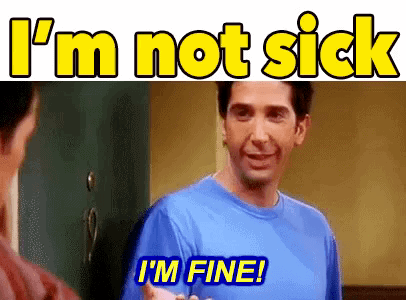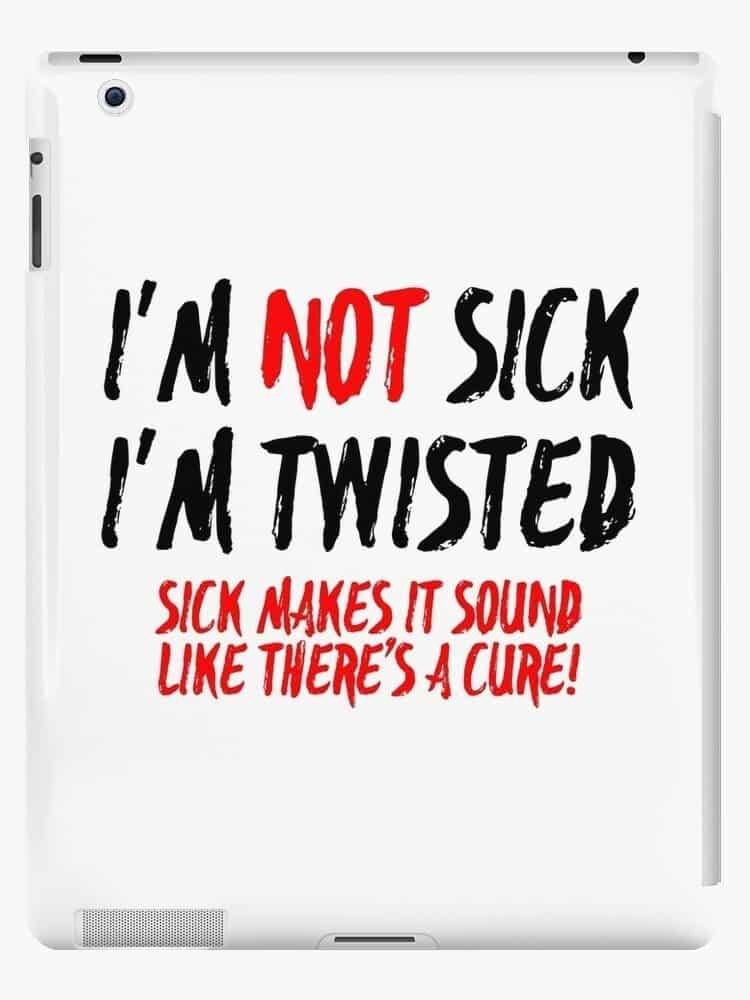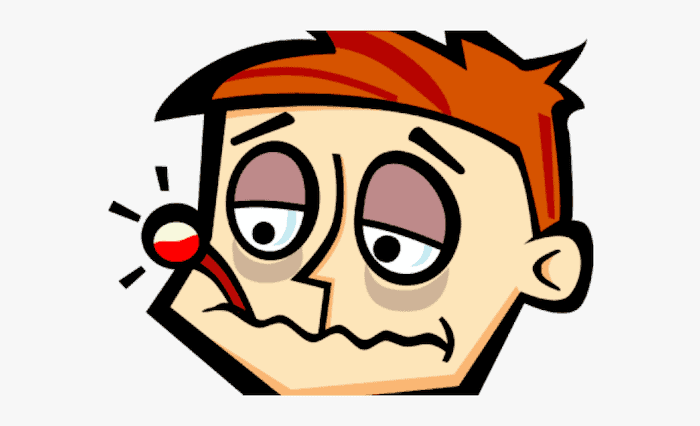Do You Have COVID Symptoms?

“Do you have COVID symptoms” is the typical retort uttered millions of times a day all over the globe as we humans have become pandemic hypochondriacs. In this post, I endeavor to explain the symptoms associated with five levels of SARS-CoV-2 infection and COVID-19 disease.
Check out my Covid Immunity CourseThese days when you complain to someone about not feeling well, the inevitable question is:
Do you have COVID symptoms?
The SARS-CoV-2 virus and subsequent — for some — COVID-19 disease has made hypochondriacs of us all. Every sneeze, cough or raspiness in the chest begs the inevitable question:
Do I have COVID?
If you’re one of the lucky ones who will be asymptomatic if infected with SARS-CoV-2, then you may never have a satisfactory answer, but if you are over 60 years of age and/or have basically any chronic health issue — like heart, pulmonary, blood sugar or body weight issues — then the question of COVID symptoms becomes an important one to answer.
So, do you have COVID symptoms?
Read on and find out..
Do You Have COVID Symptoms?
Cases of coronavirus and COVID-19 can generally be categorized into five groups: Asymptomatic, Mild, Moderate, Severe and Critical.
What follows are descriptions of each group of symptoms; however, realize that this coronavirus is evolving, as are symptoms, so use this information as a guide, not an absolute dictum.
1. Asymptomatic Symptoms 
Being asymptomatic means that you have COVID-19, but have no symptoms. Some people report a loss of smell who are otherwise asymptomatic. Other than that, some number of people with COVID-19 that have been estimated to be between 40 and 80% of all cases have no symptoms, which is good for them and potentially bad for others.
Although it’s great not to have symptoms, in such cases people usually don’t know they’re infected and can spread the disease if they don’t take the precautions of washing their hands and wearing a face mask when near others.
If you live in a house with people with probable COVID-19 infection and you have no symptoms, you may have an asymptomatic case.
Remember, this entire pandemic probably started with one case. Don’t be a spreader.
2. Mild Symptoms 
The virus mainly affects your upper respiratory tract, primarily the large airways.
Key symptoms are temperature, with or without cough.
People with mild illness have flu-like symptoms. These may include dry cough and mild fever, but the fever may not reach 100°F (37.8°C), and sometimes be little or even no cough.
People might notice a feeling of being a bit more breathless than normal during exercise, but are otherwise not out of breath.
Typically, healthy people under 60 who have symptoms will have this form.
Most symptomatic COVID-19 cases are mild and remain mild in severity; however, patients with mild disease can deteriorate quickly, and this is more likely in at-risk groups — those with comorbidities and the elderly.
With Mild COVID-19:
- You may have a fever, but it doesn’t reach 100°F/37.8°C.
- You may lose your sense of smell.
- You may have tiredness, muscle aches or a headache.
- You are not highly likely to have a sore throat or runny nose, but they do occur in some cases.
- You do not have marked breathlessness.
- Your self-care, cooking, eating and drinking are not affected. Your appetite is normal or fairly normal.
- You may feel sad or weepy.
- The symptoms typically seem to last about 7 to 10 days.
3. Moderate Symptoms 
If the symptoms described in the Mild category get worse, you may have entered the Moderate stage, where inflammation occurs lower down in the lungs, and thus lung symptoms like cough are more apparent.
The lungs consist of large airways (bronchi), smaller airways (bronchioles) and the tiny air sacs on the end (alveoli) where oxygen is extracted from the air. They contain a fluid called surfactant which keeps the lungs stretchy and compliant and helps keep the air sacs open. People with moderate COVID-19 may have inflammation moving down into the bronchioles. They are more breathless and tend to have an increased heart rate, particularly if they’re moving around.
With Moderate COVID-19:
- You may have a more troublesome cough than those with mild symptoms.
- Your temperature is more likely to reach or exceed 100°F/37.8°C.
- You may be breathless on exercise, even on walking up the stairs, but not to a degree that alarms you, and if you potter around your house or sit still you are not breathless.
- It may be a little sore to keep coughing but you are not in pain.
- The cough may be, for a few days, very persistent, coughing many times an hour.
- Your sleep may be slightly disturbed by your cough, but you do get some sleep, and you are not breathless in bed.
- You may get diarrhea. Nausea and vomiting are, however, unlikely.
- You may have a headache, particularly if you are hot.
- You may show early signs of inflammation of your lungs – you are more breathless than a mild case, where breathlessness is only slight and on exercise.
- You may feel tired, but still able to move about your own home comfortably, and you can shower and self-care if you must, even though you may not want to.
- You may feel dry-mouthed, from breathing through an open mouth. But when you pass urine it is still pale yellow, the colour of a glass of lager, so you are not dehydrated.
- You can sit and watch TV or read a book without feeling you are struggling to breathe, or worrying that you can’t breathe.
- If you talk to others, nobody thinks you are confused or not making sense.
- You may be able to prepare your food and drink, or you may feel too weary to do so, but you are still able to eat, even if it is less than usual. Your ability to eat is not prevented by the need to breathe.
- For a few days you may feel so tired that you want to stay in bed.
- You may feel miserable, weepy or low.
Moderate COVID-19 is very common. It commonly lasts about 7 to 14 days.
Seek medical advice by phone immediately if:
- You have these symptoms but you are becoming increasingly breathless.
- You cannot manage basic things like showering and eating.
- You cannot speak in whole sentences without taking extra breaths.
4. Severe Symptoms 
Severe COVID-19 means that you have pneumonia, which is inflammation (caused by infection) of the lungs themselves, right down into the tiny air sacs (alveoli).
Severe COVID-19 is much more likely if you are older or have any of the health conditions (comorbidities) that make you vulnerable.
Patients with severe disease are very breathless (and may be unable to breathe at a comfortable rate on slight moving around or even at rest), and breathe faster than usual, even when sitting still. They cannot finish a sentence without extra breaths. They may even avoid speaking. Their oxygen levels may have fallen so the urge to breathe faster is strong.
Doctors will measure breathing rates when assessing this condition. Normal adults breathe at about 12 to 18 breaths per minute when they are not thinking about it. In pneumonia the rate rises, sometimes markedly. (Note: these are adult rates. Young children breathe faster than adults.)
With Severe COVID-19:
- You are noticeably breathless and you can do very little.
- You may be breathless, even when sitting still.
- You may be unable to complete a sentence when speaking.
- You may feel you are having to work hard to breathe.
- Your chest, tummy or back hurts when you breathe.
- Your temperature is high.
- Your chest is tight, as if you can’t expand it properly.
- You can’t keep up with your breathing, as if you had just sprinted hard (except you haven’t).
- You are not eating or drinking normally.
- You can’t read or watch TV because you are too focused on breathing or feel too unwell.
- Others think you are confused.
Other common symptoms of COVID-19 pneumonia include (and you do not have to have all or even most of them):
- Rapid and shallow breathing.
- Rapid heartbeat.
- Unwell appearance.
- Lowered blood pressure.
If you think that you or someone you know have symptoms like this you should seek urgent medical help by telephone.
5. Critical Symptoms 
People with critical COVID-19 are very ill. Before you even get to this point, you should be in a hospital.
Those in the Critical stage often have severe pneumonia, a condition called ARDS (acute respiratory distress syndrome) can develop. The small air sacs in the lungs become so inflamed and wet that they tend to stick shut, and surfactant cannot do its job as there is too much inflammatory fluid in the alveoli responding to the virus. You need help with inflating your lungs, which is what a ventilator helps do.
The most critical of all of these patients develop sepsis (a potentially life-threatening condition caused by the body’s response to an infection), and other bodily organs stop working.
With Critical COVID-19:
- You may have pneumonia and/or ARDS.
- You may have sepsis.
- You should be hospitalized.
The chances of this happening to any previously healthy individual are very low, but not zero. Young and healthy people have become extremely sick, and some have died from COVID-19.
The majority of elderly patients also do not develop critical COVID-19, but a significant proportion do. The risk rises with age and with the health conditions that we know make you vulnerable.
The number of COVID-19 cases that we now have in the world means that even a small percentage of patients developing sepsis makes for a large number of patients. You can survive critical COVID-19 with help from intensive care, but even that is not always enough, as we are seeing worldwide.
Last Updated on February 3, 2021 by Joe Garma



